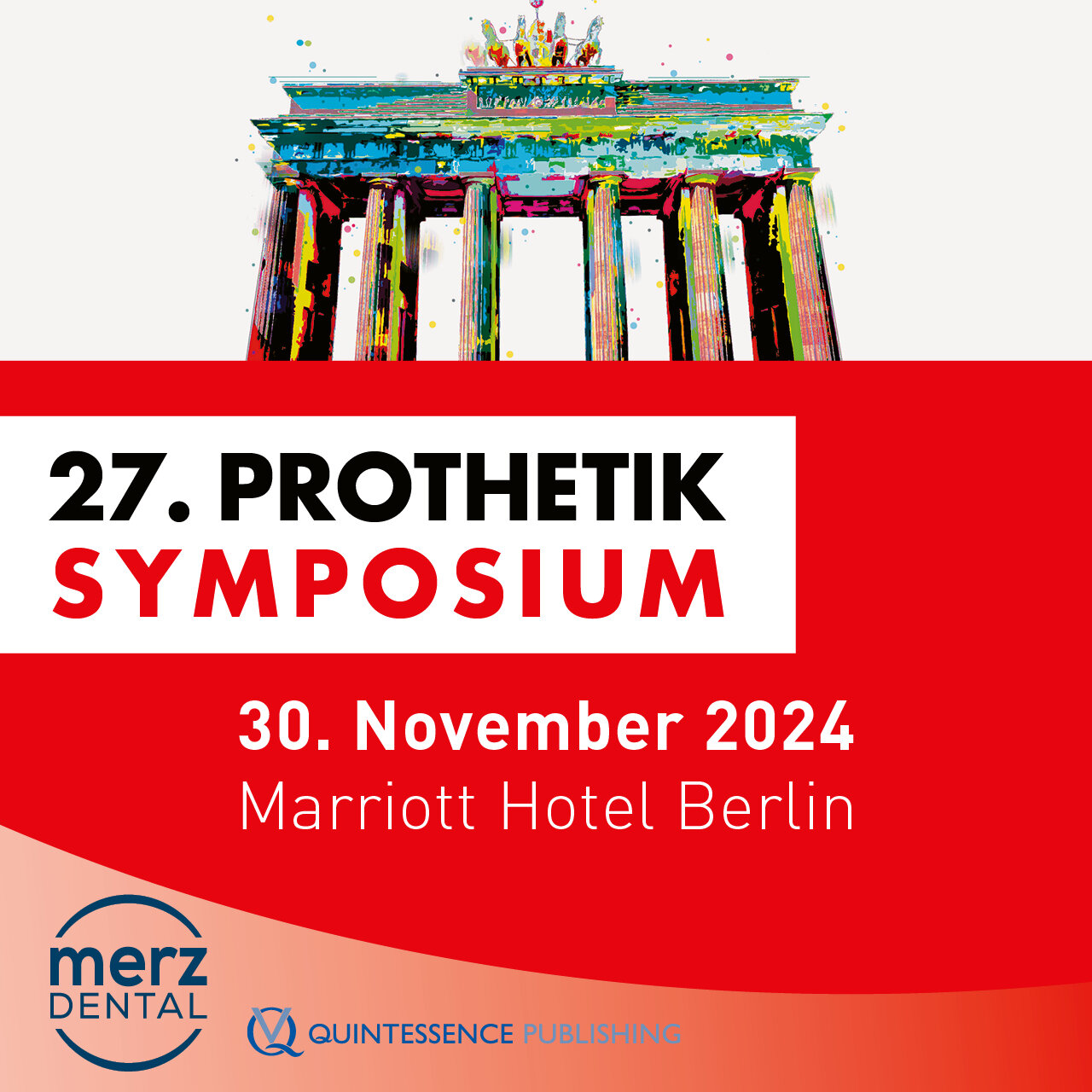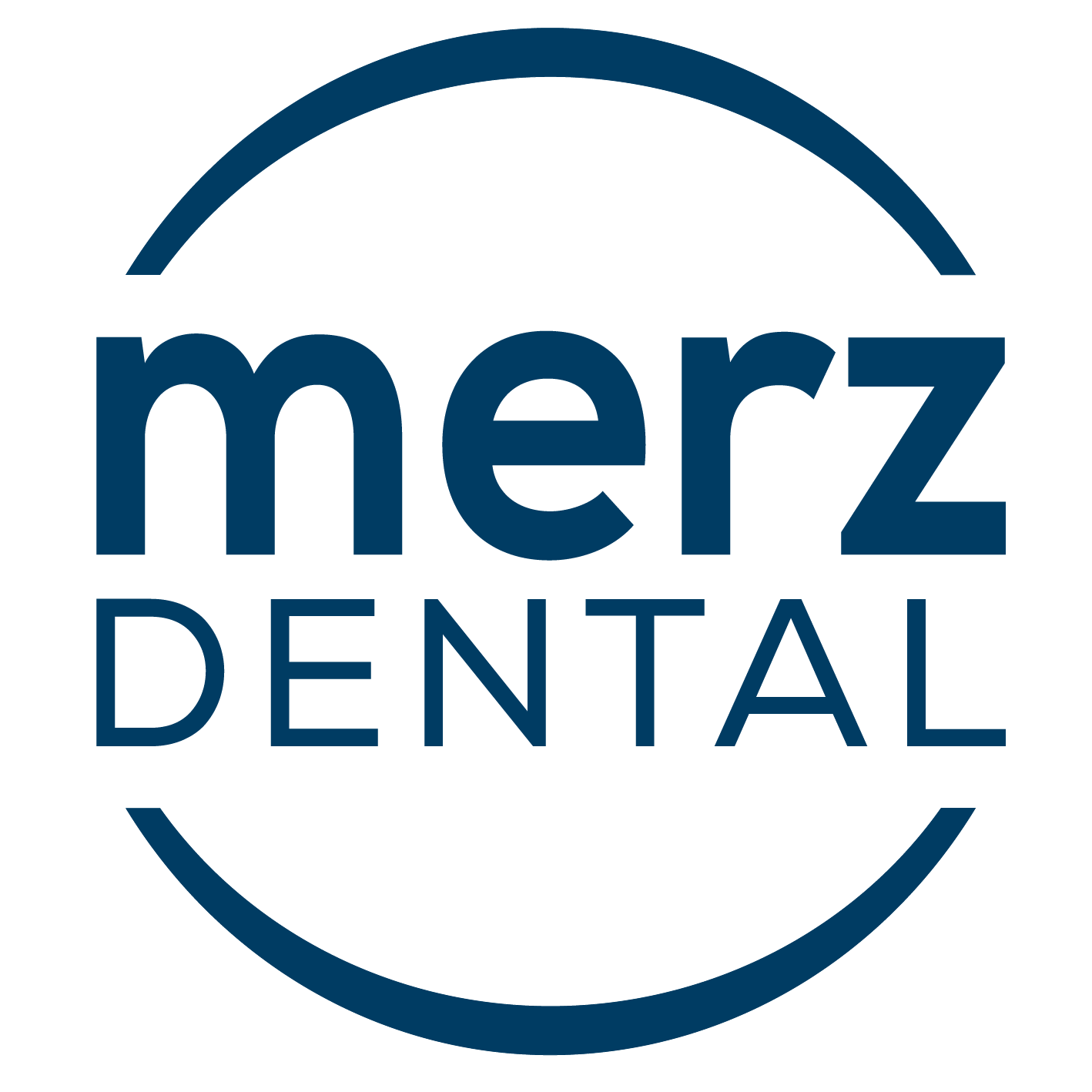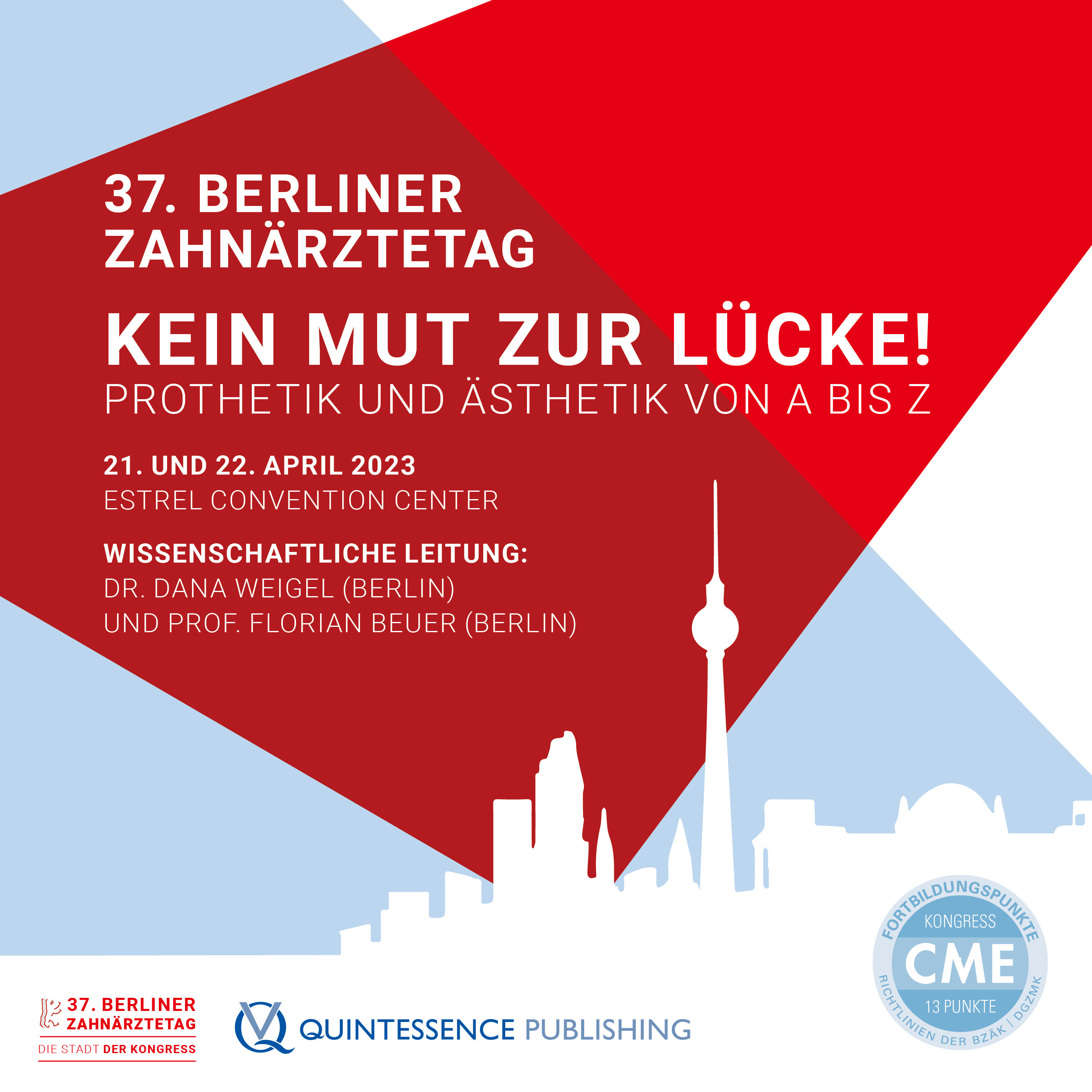Implantologie, 4/2024
Pages 415-432, Language: GermanHildebrand, Detlef / Gärtner, Florian / Rosinski, Andrea / Jäckel, Timo / Siebert, Heiko / Kunz, Andreas / Beuer, FlorianEin Überblick aus der PraxisDie Behandlung prospektiv zahnloser Patienten mit dentalen Implantaten stellt die Zahnärzte auch heute vor große Herausforderungen vor, während und nach der chirurgischen Phase. Die Behandlungsplanung und deren Umsetzung sind von essenzieller Bedeutung, um den klinischen Behandlungserfolg zu garantieren. Anhand einer fundierten Analyse der Ausgangssituation werden im vorliegenden Beitrag die notwendigen Behandlungsschritte vollumfänglich skizziert, in den klinischen Ablauf integriert und umgesetzt. Dabei spielen für die Behandlung des zahnlosen Kiefers grundsätzliche Entscheidungen eine große Rolle: (1) „In welchem Umfang müssen Extraktionen erfolgen?“, (2) „Kann eine sofortige Implantation (Sofortimplantation) erfolgen?“ und (3) „Kann eine zeitgleiche prothetische Versorgung (Sofortversorgung) umgesetzt werden?“. Das Behandlungsteam, bestehend aus Implantologe/Chirurg, Prothetiker und Zahntechniker, funktioniert umso besser und effektiver, je besser die Behandlungsabläufe analog und digital miteinander abgestimmt sind und diese im Sinne eines zielgerichteten Workflows funktionieren. In diesem Artikel werden digitale Hilfsmittel im Bereich der Planung, Platzierung und Weiterentwicklungen moderner Implantatsysteme beleuchtet, die das implantologische Team unterstützen können. Neue Implantate mit speziellen Schraubendesigns helfen nicht nur, die Primärstabilität nach Einbringung in den Knochen vor der initialen Sofortbelastung zu verbessern, sondern ermöglichen mit kurzen bzw. extrakurzen Implantatlängen (8 mm) auch im atrophierten Seitenzahnbereich zahnloser Ober- und Unterkiefer, die klassischen „All-on-X“-Konzepte („All-on-4“) zu erweitern bzw. zu vereinfachen („Fix-on-X“). Anhand von beispielhaften Patientenfällen werden diese aktuellen Konzepte veranschaulicht und anhand der klinischen Daten diskutiert.
Keywords: All-on-4, Fix-on-X, Sofortimplantation, Sofortbelastung, Sofortversorgung, Implantate mit aggressivem Gewinde, Primärstabilität, kurze Implantate, beschleunigte Regeneration
International Journal of Computerized Dentistry, 1/2024
ScienceDOI: 10.3290/j.ijcd.b3916799, PubMed ID (PMID): 36811290Pages 89-97, Language: English, GermanHofmann, Paul / Kunz, Andreas / Schmidt, Franziska / Beuer, Florian / Duddeck, DirkPurpose: A reference method for quantifying contaminations on two-piece abutments manufactured using CAD/CAM has not yet been established. In the present in vitro study, a pixel-based machine learning (ML) method for detecting contamination on customized two-piece abutments was investigated and embedded in a semiautomated quantification pipeline.
Materials and methods: Forty-nine CAD/CAM zirconia abutments were fabricated and bonded to a prefabricated titanium base. All samples were analyzed for contamination by scanning electron microscopy (SEM) imaging followed by pixel-based ML and thresholding (SW) for contamination detection; quantification was performed in the postprocessing pipeline. Wilcoxon signed-rank test and Bland-Altmann plot were applied to compare both methods. The contaminated area fraction was recorded as a percentage.
Results: There was no statistically significant difference between the percentages of contamination areas (median = 0.004) measured with ML (median = 0.008) and with SW (median = 0.012), asymptotic Wilcoxon test: P = 0.22. The Bland-Altmann plot demonstrated a mean difference of -0.006% (95% confidence interval [CI] from -0.011% to 0.0001%) with increased values from a contamination area fraction of > 0.03% for ML.
Conclusion: Both segmentation methods showed comparable results in evaluating surface cleanliness; pixel-based ML is a promising assessment tool for detecting external contaminations on zirconia abutments. Further studies are required to investigate the clinical performance of this tool.
Keywords: computer-aided design, scanning electron microscopy, machine learning, ultrasonics, hygiene, dental implant abutments
QZ - Quintessenz Zahntechnik, 1/2023
EditorialPages 3, Language: GermanKunz, AndreasInternational Journal of Computerized Dentistry, 2/2022
ApplicationPubMed ID (PMID): 35851358Pages 221-231, Language: English, GermanHerklotz, Insa / Kunz, Andreas / Stimmelmayr, Michael / Beuer, FlorianA case reportBackground: Treatment of the edentulous maxilla with a fixed full-arch prosthesis on four immediately loaded implants has been discussed as a treatment option, although generally five implants are recommended for that indication. The precise transfer of the virtually planned position by 3D-guided implant placement is an essential prerequisite for delivering the prefabricated temporary restoration at the time of surgery. Three-point support on the teeth or implants ensures that the template for the guided surgery is soundly seated during the operation.
Case presentation: In the described case, the three-point support was carried out by teeth and temporary implants in the molar region inserted prior to the CBCT. The virtual implant planning determined the best prosthetic implant position while using the available bone to avoid extensive augmentation. Following this, a metal-reinforced provisional restoration was prepared using a drilling template. Four implants were placed in the planned position with the aid of a tooth-/implant-supported guide. The prosthetic axis of the angulated distal implants is balanced by 17-degree angled abutments. After transferring the implant position to the dental laboratory, the prepared restoration was finalized. The remaining teeth were extracted and the temporary restoration was delivered 3 h after implant placement. The definitive fixed full-arch zirconia restoration with micro layering was placed 9 months later in a stable situation.
Conclusion: The remarkable accuracy of the implant placement with a surgical template generated from preoperative virtual implant planning ensures a relatively short treatment time and an uneventful and fast recovery with minimal discomfort. The immediate prosthodontic rehabilitation is a benefit, not only for the patient but also for the dental team. Micro-layered monolithic zirconia seems to be a promising option for screw-retained full-arch prostheses.
Keywords: guided implant surgery, edentulous jaw, backward planning, immediate function, digital workflow
QZ - Quintessenz Zahntechnik, 3/2019
StatementPages 316-317, Language: GermanKunz, AndreasQZ - Quintessenz Zahntechnik, 11/2019
FallstudiePages 1382-1398, Language: GermanReimann, Frederic / Kunz, AndreasKombination von Ästhetik und StabilitätIn dem Beitrag wird ein implantatgetragenes Versorgungskonzept vorgestellt, das zwei unterschiedliche vollkeramische Werkstoffe zusammenfügt. Mittels Fügekeramik werden Lithiumdisilikatkrone und Zirkonoxidabutment versintert. Ziel ist, Biokompatibilität und Stabilität des Zirkonoxids (Hybridabutment) mit den guten lichtoptischen Eigenschaften des Lithiumdisilikats zu kombinieren. Zusätzlich wird das Chipping-Risiko durch eine annähernde monolithische Suprakonstruktion reduziert.
Keywords: implantatgetragener Zahnersatz, Hybridabutment, Sinterverbund, Zirkonoxid, Lithiumdisilikat, Fügekeramik
Quintessenz Zahnmedizin, 9/2017
ImplantologiePages 1023-1029, Language: GermanHerklotz, Insa / Kunz, Andreas / Beuer, FlorianOft diskutiert und doch nicht abschließend geklärt ist die Art der Verbindung bei festsitzenden Implantatrestaurationen. Grundsätzlich kann zwischen zementiert oder verschraubt gestalteten Versorgungen unterschieden werden. Aufgrund des Risikos, dass Zementreste im Sulkus verbleiben, empfiehlt es sich, bei der zementierten Therapievariante individualisierte Abutments zu nutzen. Vor allem im Frontzahngebiet werden hiermit bei einer für die Verschraubung ungünstigen Implantatachse ansprechende Ergebnisse erzielt. Die verschraubten Implantat-restaurationen lassen sich im Bedarfsfall leicht entfernen und zeigen mit der Sinterverbundtechnik ästhetisch, biologisch und mechanisch hervorragende Resultate. Bei korrekter Anwendung ist keine der beiden Therapievarianten überlegen, und die Entscheidung, welche zum Einsatz kommt, hängt von der Präferenz des behandelnden Zahnarztes ab.
Keywords: Verschraubte Implantatrestauration, zementierte Implantatrestauration, Sinterverbundkrone, individualisiertes Abutment, Chipping
International Journal of Computerized Dentistry, 1/2017
PubMed ID (PMID): 28294202Pages 9-19, Language: English, GermanHerklotz, Insa / Beuer, Florian / Kunz, Andreas / Hildebrand, Detlef / Happe, ArndtThe primary objective of implant insertion is optimal prosthetic implant positioning while simultaneously protecting sensitive anatomical structures. In this context, navigated implants show significantly better results than freehand-inserted implants. Computer-assisted navigation, in combination with three-dimensional (3D) imaging by cone beam computed tomography (CBCT), is an ideal way to achieve higher predictability for successful implant therapy. Basically, one can distinguish between static navigation using templates, and direct dynamic navigation using optical transmission systems. Both options demonstrate comparably good results as far as the precision of implant positioning is concerned. Today, the gold standard is digital manufacturing of the template. Direct navigation is the more attractive option, provided acquisition costs can be reduced by simplifying the system. This article presents patient cases that demonstrate different variants of navigated implantology.
Keywords: static navigation, dynamic navigation, digital manufacturing, template, CAD/CAM, reference marker
International Journal of Esthetic Dentistry (EN), 2/2016
PubMed ID (PMID): 27092346Pages 186-202, Language: EnglishHappe, Arndt / Kunz, AndreasPeriodontal disease presents a big challenge for clinicians placing dental implants. Besides the implant treatment, additional surgical procedures such as grafting or sinus floor elevation are often necessary to achieve a satisfactory result. Patient compliance is also important for achieving long-term treatment success. In the case presented here, digital planning and computer-aided surgery facilitated placement of the implants and fabrication of the prosthetic superstructures. The patient then wore INTERNAT IONAL metal-based provisional fixed partial dentures (FPDs) for about a year, while her compliance and oral hygiene were evaluated. During this period, the occlusal relations remained stable and the good condition of the hard and soft tissue was maintained. In the maxilla, the final restoration incorporated custom zirconia abutments and a zirconia framework fabricated using CAD/CAM technology. Titanium abutments and a cast non-precious metal framework were fabricated for the mandible.
International Journal of Esthetic Dentistry (DE), 2/2016
Pages 196-212, Language: GermanHappe, Arndt / Kunz, AndreasParodontalerkrankungen stellen den implantologisch tätigen Zahnarzt vor große Herausforderungen. Denn neben der Implantattherapie sind für ein zufriedenstellendes Ergebnis häufig zusätzliche chirurgische Maßnahmen wie Transplantationen oder Sinusbodenaugmentationen notwendig. Wichtig für den langfristigen Behandlungserfolg ist auch die Compliance der Patienten. Im hier vorgestellten Fall wurden die Implantation und Herstellung der prothetischen Suprastruktur mithilfe digitaler Planung und computergestützter Chirurgie vorgenommen. Die Patientin erhielt zunächst für etwa ein Jahr eine provisorische Brücke mit Metallgerüst, um ihre Compliance und Mundhygiene zu bewerten. Während dieses Zeitraums blieben die Okklusion stabil und die Hart- und Weichgewebe in gesundem Zustand. Im Oberkiefer bestand die definitive Versorgung aus individuellen Zirkonoxidabutments und einem CAD/ CAM-gefertigten Zirkonoxidgerüst, während für den Unterkiefer Titanabutments und ein gegossenes NE M-Gerüst hergestellt wurden.







